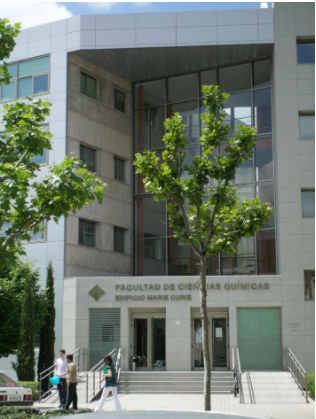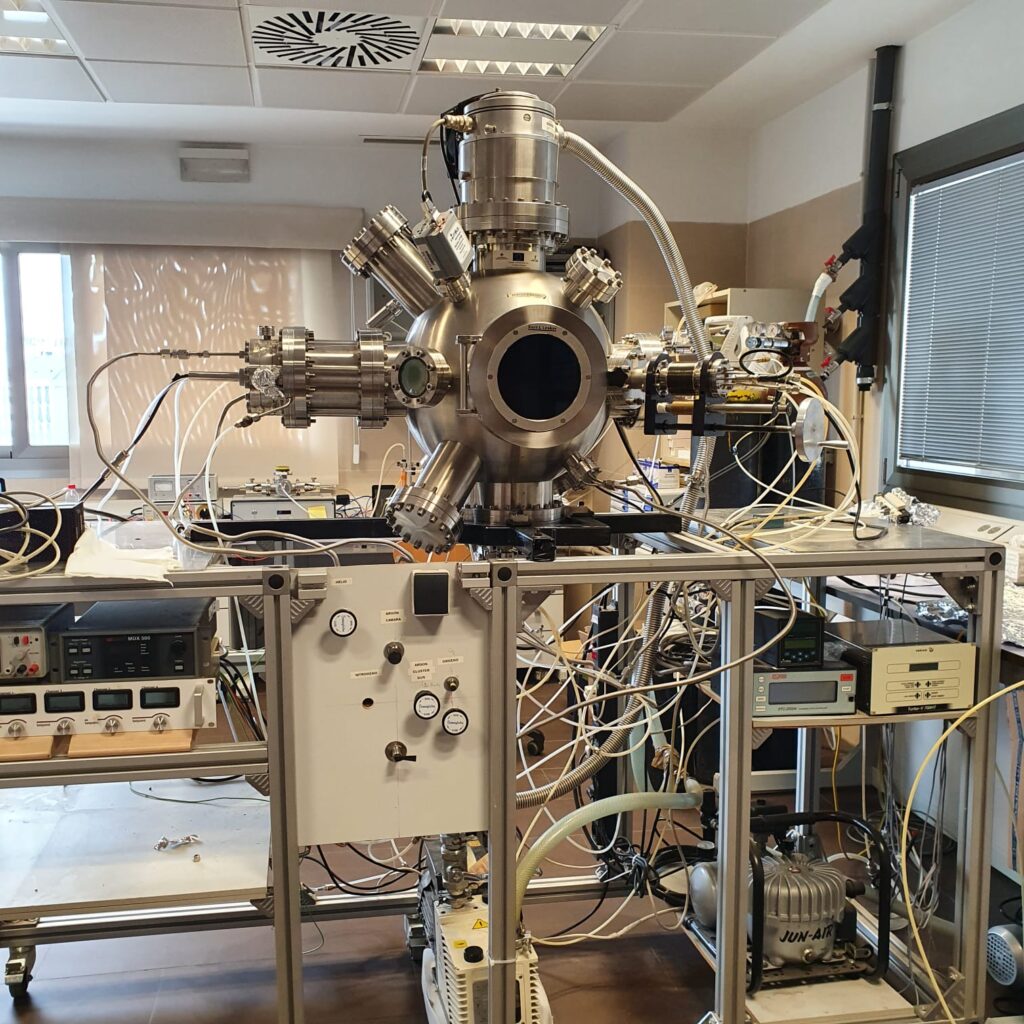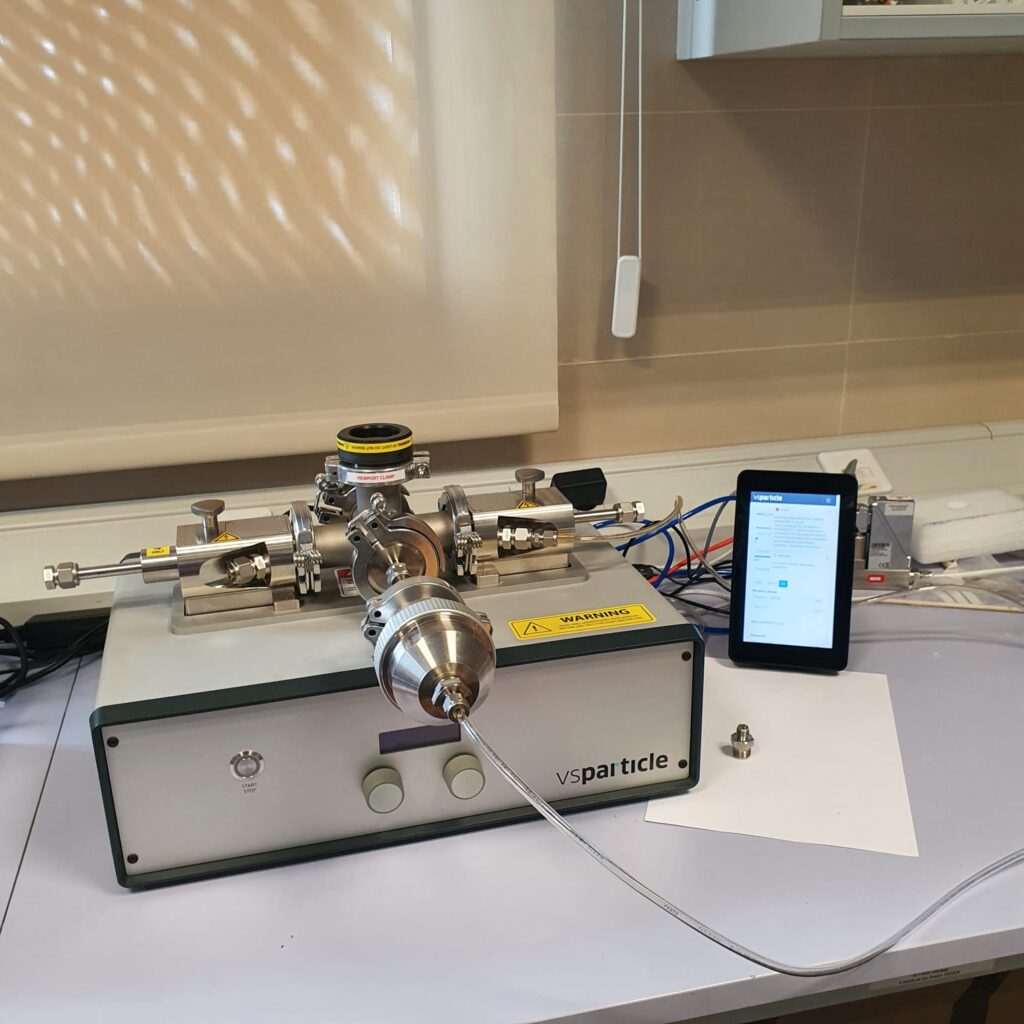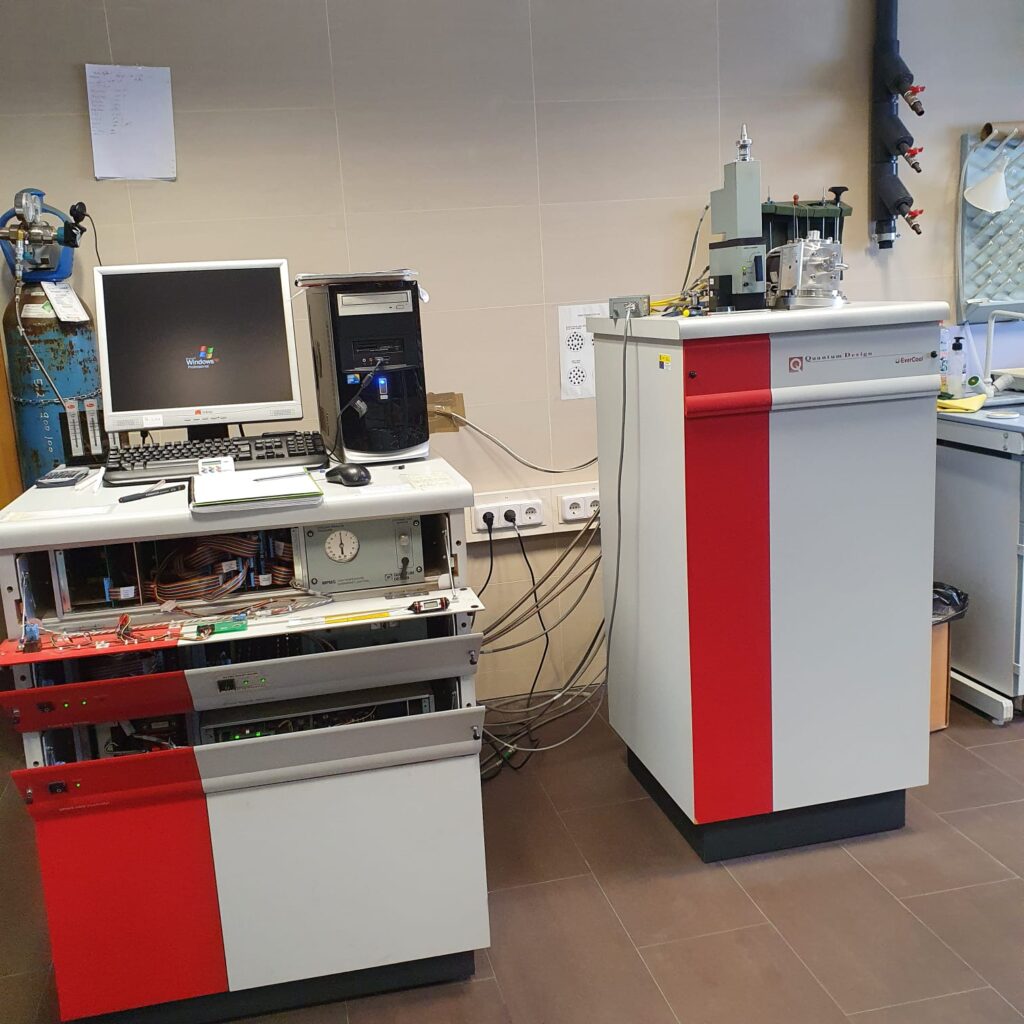IRICA
(Instituto Regional de Investigación Científica Aplicada,
Ciudad Real)

The Applied Nanomagnetism lab at IRICA offers facilities for synthesis and characterization -structural, compositional and magnetic- of magnetic nanostructures.
These nanostructures can be synthesized in a vacuum deposition chamber with 2 sputtering magnetrons, a nanoparticles source, a rotatory sample holder mounted on a linear shift and a Quartz Crystal Microbalance (QCM). The particle source is operated with standard and hollow cathodes. The metal vapor condenses into nanoparticles in an aggregation chamber before reaching the main chamber as a beam through a nozzle. It is possible to control the particle size by changing the aggregation distance and by using a carrier gas (He).

Synthesis of nanoparticles at ambient pressure is also possible using a spark ablation source. By applying a given voltage (up to 1.35 kV and 10.4 mA of applied current) between two electrodes of the chosen materials, this source is able to produce nanoparticles which are carried away by a gas flow (e.g., Ar or N2). Thus, aerosols of different materials can be produced, even bimetallic systems. The nanoparticles can be deposited onto porous substrates or TEM grids for subsequent characterization using different accessories

Magnetic characterization can be performed with a Superconducting Quantum Interference Device magnetometer (SQUID) with equipped with an EverCool He liquifier. The SQUID magnetometer allows the measurement of both ac and dc magnetic response as a function of temperature (from 2 K to 400 K), magnetic field (up to 5 Tesla) and, for the case of ac susceptibility, frequency of the driving field.
